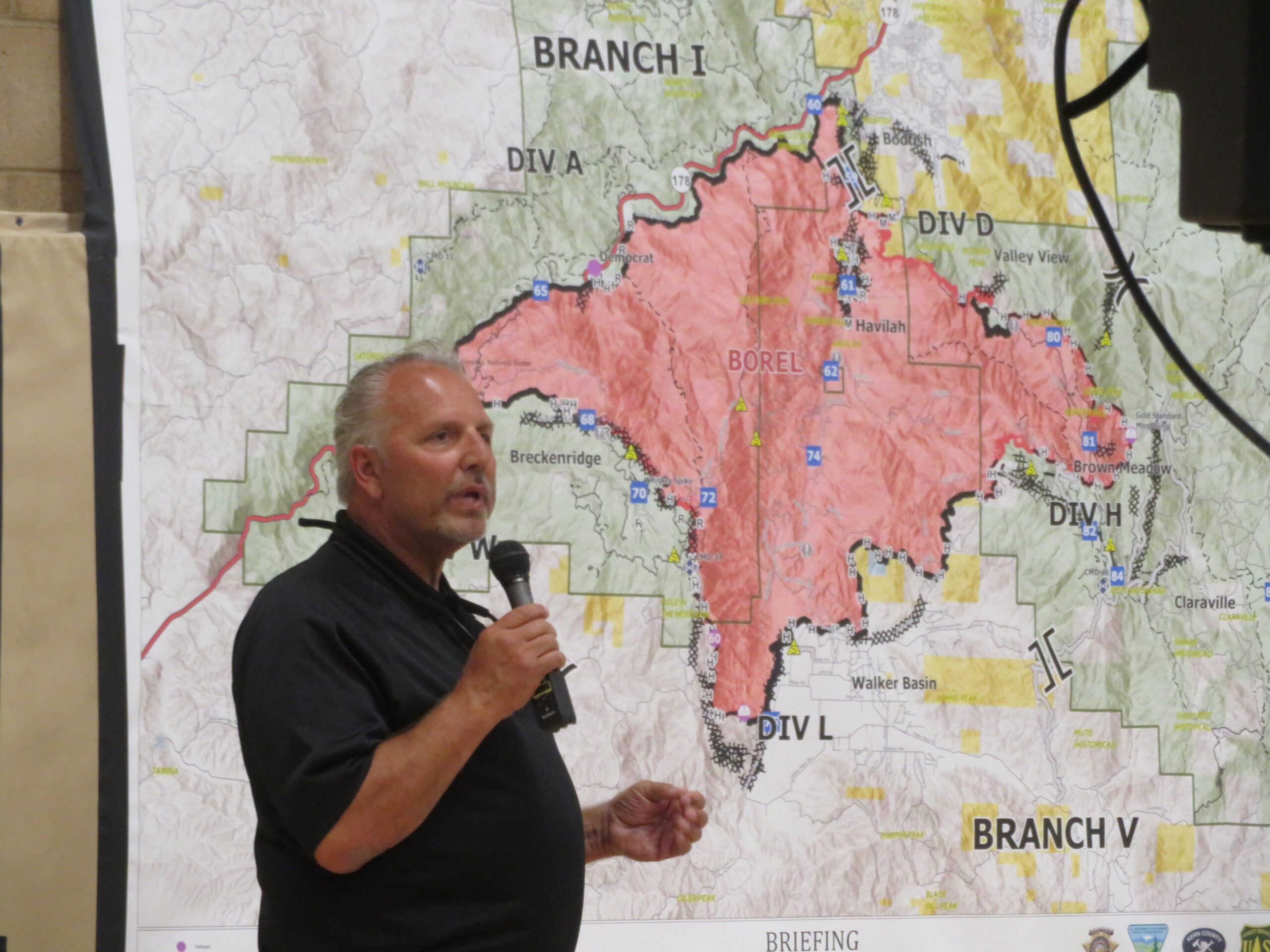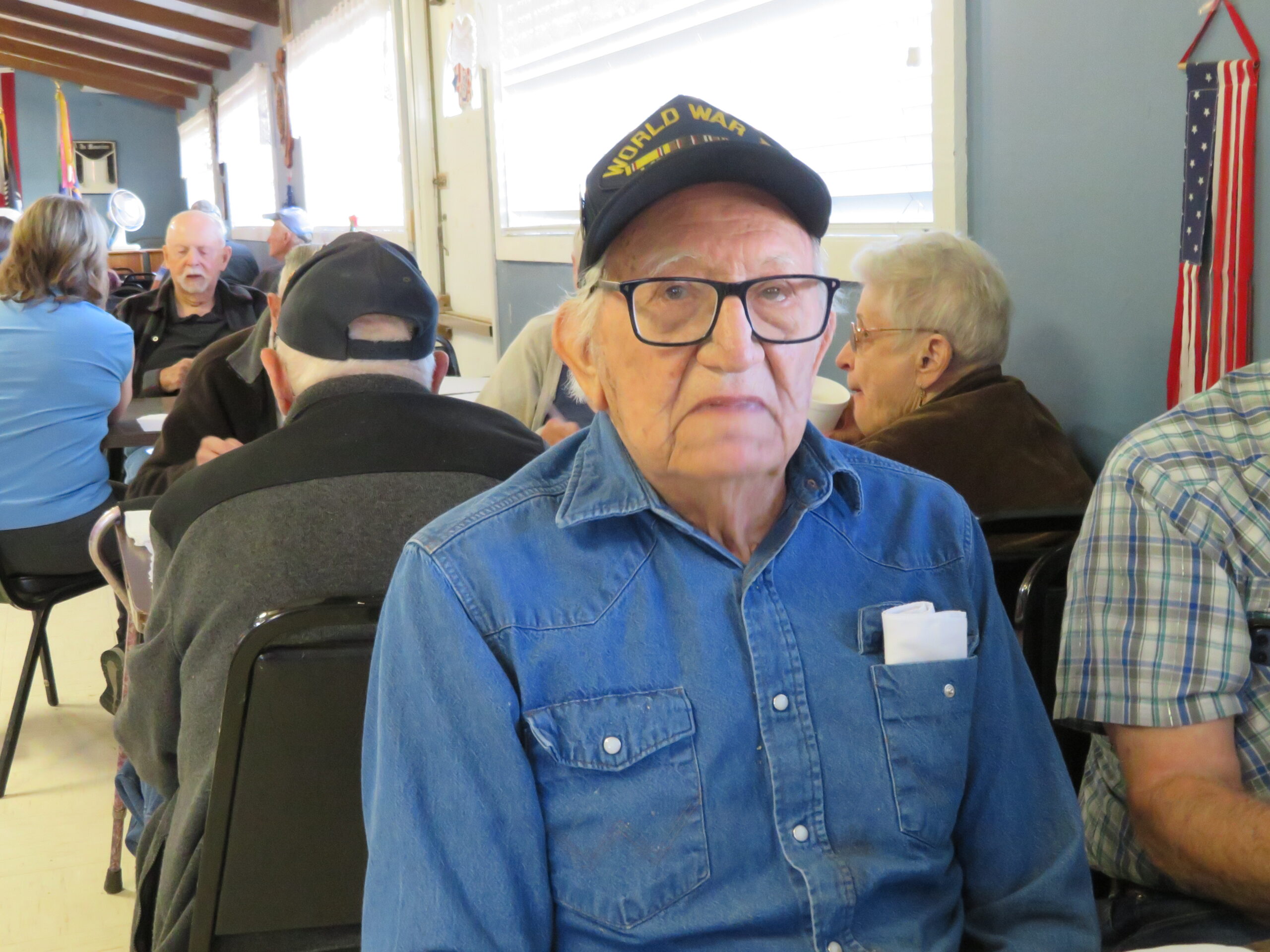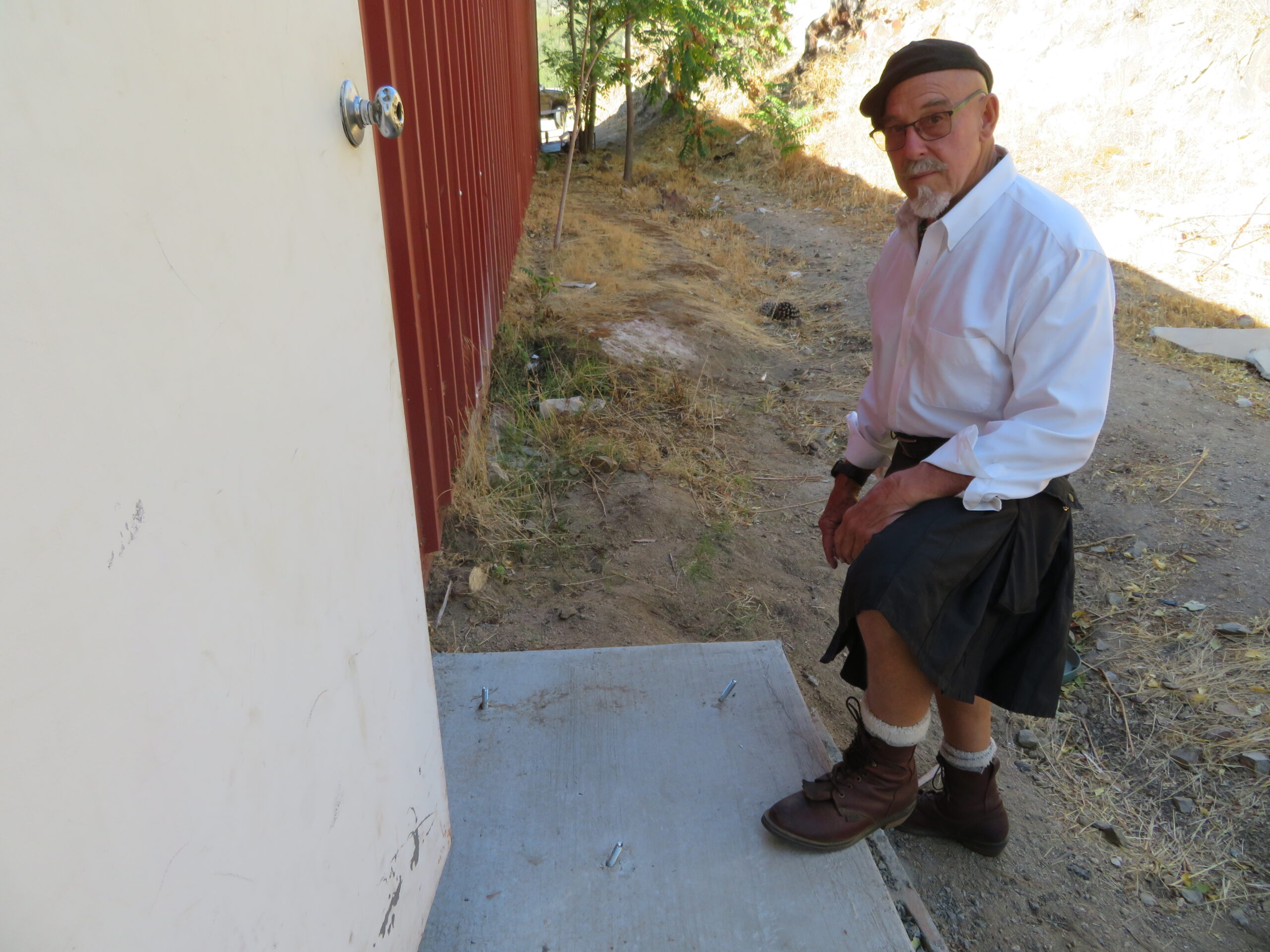Photo by Catherine Stachowiak
Sunday August 4 Steve Rasmusson, who is public information officer of the California Interagency Incident Management Team 11 opened the Borel Fire Community Meeting at Wallace Middle School, thanking the public for sharing support and comments.
Assemblyman Vince Fong attended the meeting and so did Supervisor Phillip Peters’ staff members Leigh Ann Cook and Cody Criswell.
Members of the community from Havilah complained that they felt their properties were not protected well enough, and that not enough firefighting resources were sent to Havilah, which ended up burning down; a town with historical sites.
Evacuees had questions about their children attending school, which firefighters could not answer at the meeting, because they’re not school officials.
The first speaker was operations sections chief Mark LaMont. He said the goal was to bring the fire to full containment. He also noted that his family was praying for residents of the valley. He said firefighters left their own homes to protect the homes of local residents.
He got a call on July 25 about telling him his team would be activated and moving towards this incident and what included the Trout, the Long and the Borel fires at which time the Borel fire was about 1,000 acres. He said their team was supposed to come on July 28 but traveled early on July 26. They were able to join with the effort to help move things out. “We were ever so happy that we were able to get folks out of the Havilah Valley, as the fire ran through that area,” he said.
There were 1504 personnel involved in the 59,000-acre effort. The fire was able to move rapidly because of the conditions at that time. Firefighters currently have seven type-1 crews, 26 type-2 crews, 72 fire engines, 23 water tenders, 21 dozers, 4 excavators, 3 graders, and at the height of the event they had 16 helicopters.
The fire was able to move rapidly due to topographical features, which don’t provide for operational stopping points in conditions and this pushed the fire up from about 3,000 acres, to about 40,000 acres in a very rapid progression over a brief period.
He showed the public the progression map of the fire. Then he showed the public the operational map, with the pace map, with primary lines they established based on weather predictions and fire analysis. A little bit of a push down south and south east, validating their map and then they got marching orders from local Forest Service to preserve life, property, and the environment.
The point of origin on the 178, along the Kern River Road corridor was a challenge because firefighters had to keep the fire on the east or west side of the corridor, to get the fire up the 178 to the north, and keep the fire south of Bodfish, holding it in the saddle, which is north of Havilah.
As firefighters got into Valley View they were ahead of application, doing prep work, and they were able to work the fire. The most fire activity just before the Sunday August 4 meeting had been in the Brown Meadows area and they were hoping to keep the fire at the south fork of Erskine Creek, containing it. Firefighters were able to insert more crews Saturday, working aggressively on Sunday to hem in the open line, which had not yet been contained around the fire’s edge. LaMont said, “We are very confident that by this evening we will have what we would call scratch line around that portion of the fire and then we’ll take several days to go in and prove the entirety of that line all the way around that slot.”
LaMont said he was confident that the eastern progression would be brought into submission and firefighters could hold that line and keep more acreage from being added to the fire ground. Crews continued to work at Brown Meadows area and Solomon Ridge just north of Thompson Creek. They were working aggressively to build an indirect line that wasn’t directly on the fire’s edge. They anticipated another two working shifts would have gotten that area under control. Down north of the Walker Basin area, crews had been able to work the fire’s edge and keep the fire from threatening anything at Breckenridge. Firefighters were working on keeping the line from being threatened.
Incident meteorologist Pete Curran explained to the crowd that wind, low humidity, lightening and very high temperatures all drive wild fires. “When the team first got here we had very strong westerly winds.” He said, “Weather is the primary driver of these wild land fires.” He said understanding what the weather threats were helped him forecast for the fire fighting team how to best respond to the fire.
Gabe Garcia field manager of Bureau of Land Management said he’d been working with Tony Edwards who is Forest Supervisor for the Sequoia National Forest on fighting the Trout Fire and Long Fire for the past few weeks. He said from a fire suppression standpoint things were looking good however there would need to be control of erosion and post fire clean up. “In the Federal Government we have what we call a burned area emergency response team that comes out. That team is on its way and should be here in about a week,” Garcia said.
The burned area emergency response team consists of hydrologists, soil scientists, engineers, vegetation specialists and biologists. The team would check various severely burned areas to minimize the impacts by diverting potential for excessive water runoff. Garcia said they welcome input from the community and questions.
Chief Deputy Dionisio Mitchell of the Kern County Fire Department told the public that the fire was burning in ways they hadn’t seen in a long time. He said the department’s highest priority is human life. That was why they issued evacuation orders. He knew that the given weather and the typography they could be up for a bad fire. The department had support in Havilah, and Havilah was now in the recovery phase. The department had to check the area to ensure public safety. He thanked the public for the patience residents have shown. He said in the coming days they’d have a better synopsis about what is going on in terms of returning the public to evacuated areas.
Kern County Sheriffs Lt. Michael Dorkin said during every operational period, day shift and night shift, the department has a sergeant and eight deputies staffing the fire, manning hard closures, patrolling evacuation areas and preventing looting, break-ins and other crimes.
The department had Search and Rescue groups, particularly in Havilah. As far as they know no one was missing and no loss of life has been found or reported.
Local Search and Rescue also received assistance from the Los Angeles Fire Department and Urban Search and Rescue.
What officers have been assigned to the fire are completely dedicated to the fire, while the sheriff substation is still staffed to normal capacity for regular patrol.
Incident commander from the California Inter-agency Incident Management Team 11 Chris Fogle said his agency places large orders for resources. Resources have been getting thin with the large amounts of fires located in several states. He said the community was fortunate to get the resources it needed and tap additional resources, such as night flying aircraft to protect the communities of Walker Basin and Bodfish areas.





